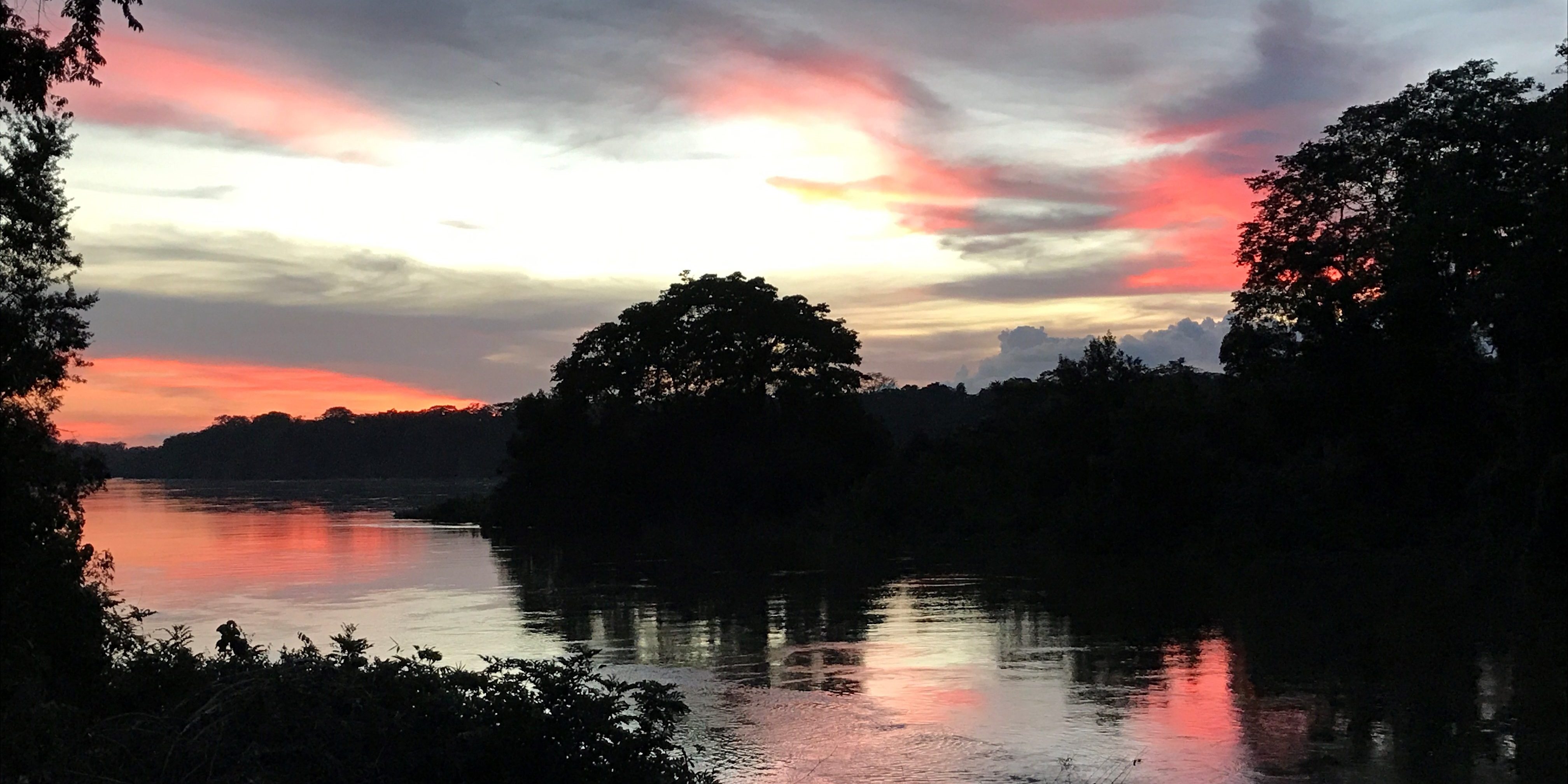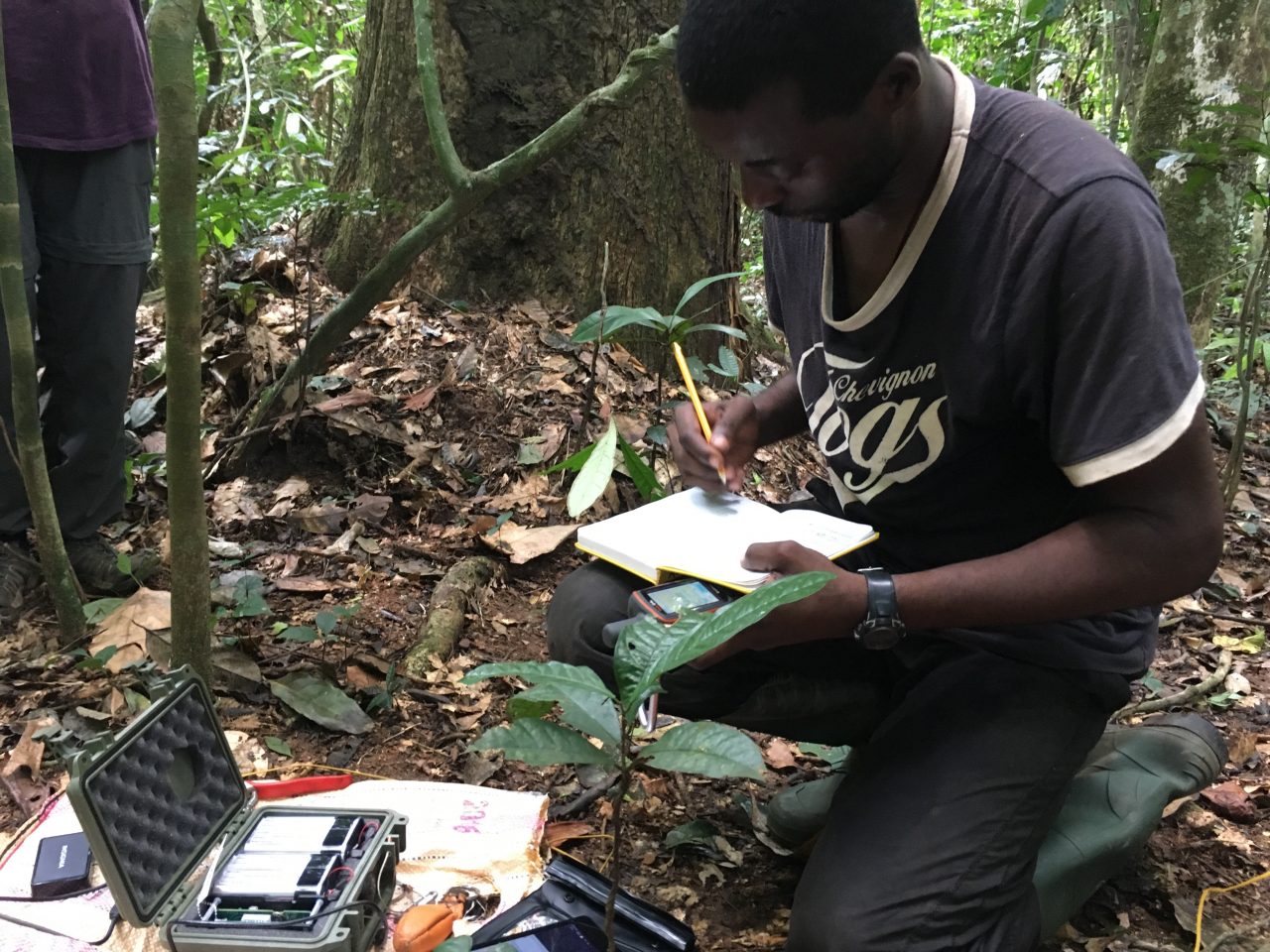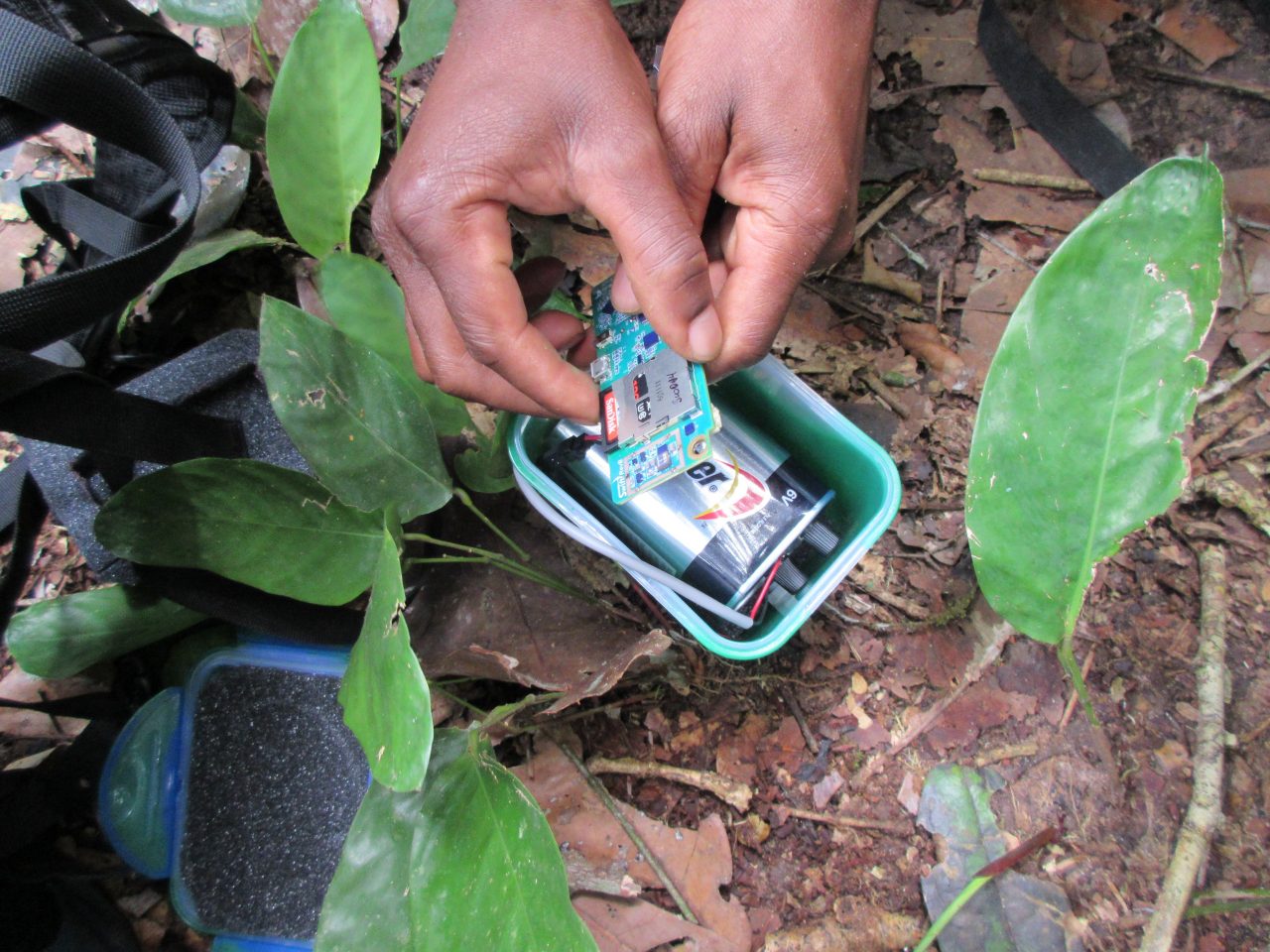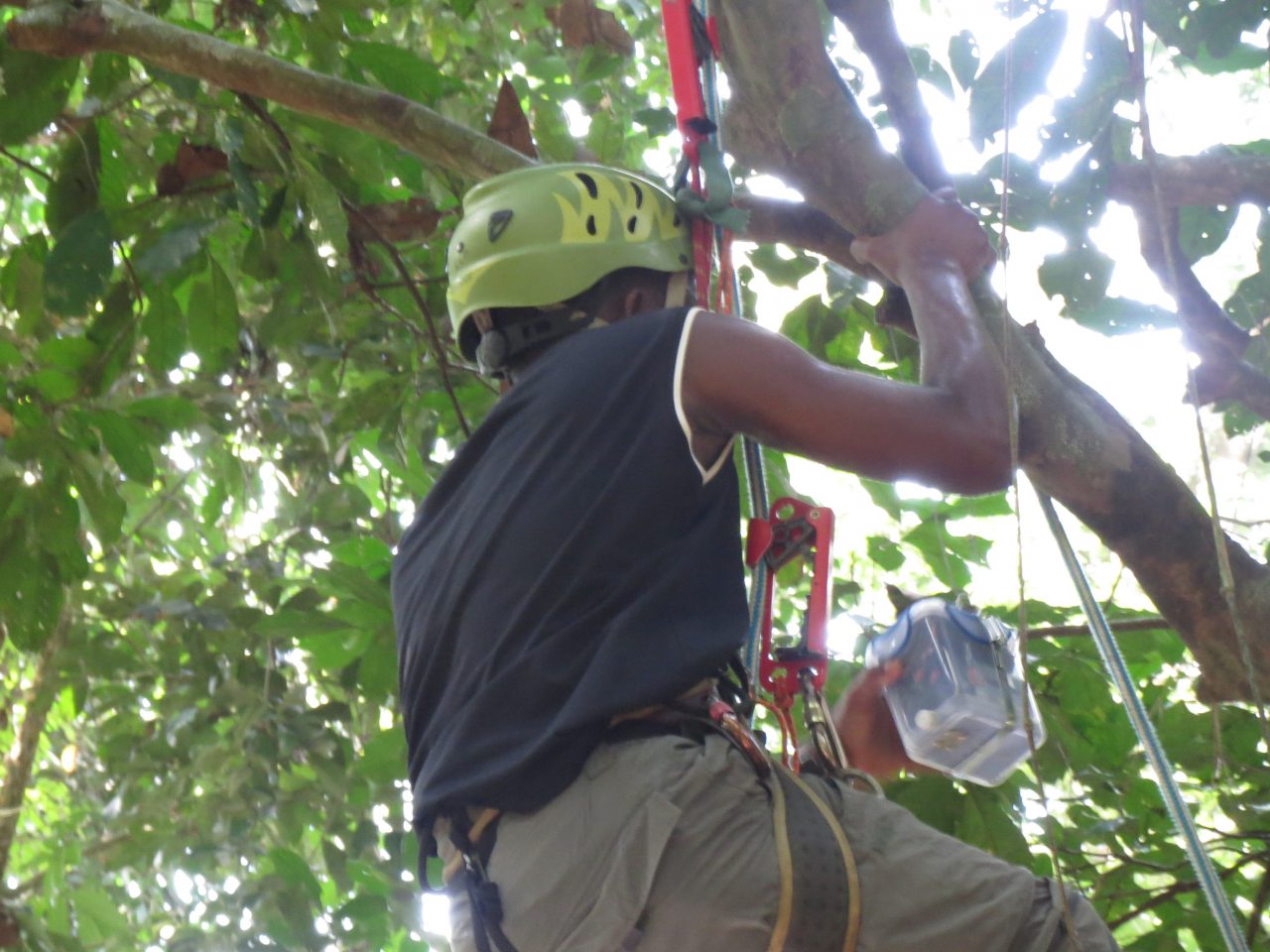At The Limit – Saving Forest Elephants
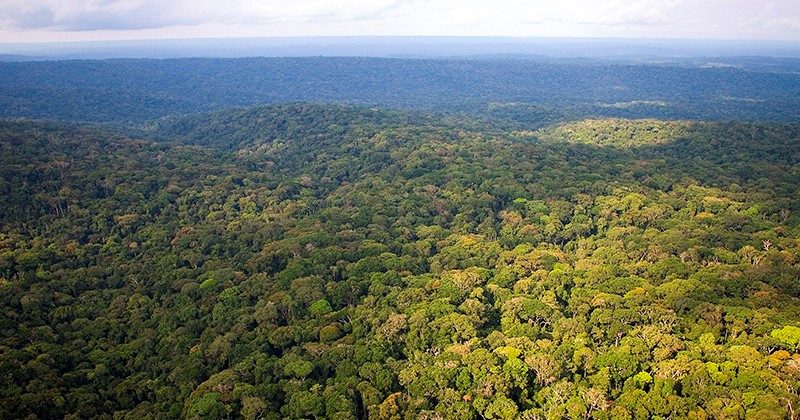
“STOP RIGHT THERE!”
Came the warning just as I was leaving the research building. Eric, peering out of an adjacent doorway whispered “He’s right around the corner next to you.”
‘He’ was ‘Choco’, a young bull forest elephant (Loxodonta cyclotis) who was regularly coming out of the surrounding forest to eat fruits and tender leaves in the Bomassa field station, headquarters for the Nouabalé-Ndoki National Park in northern Republic of Congo. This was in the fall of 2017 while Daniela Hedwig and I from the Elephant Listening Project (ELP) were in Bomassa, training our two Congolese collaborators about passive acoustic monitoring. Choco was mild-mannered and always drew everyone out from their work-places to enjoy watching such a magnificent animal from up (fairly) close. However, on my most recent trip with Liz Rowland, we were told that Choco was probably poached sometime during the intervening months, as he has not been seen since late in 2017. This just emphasizes the terrible toll that ivory poaching is taking on forest elephant populations and why we are working hard to find ways that we can better protect this species through the use of acoustic tools.
A few hundred wing-flicks of an African Grey Parrot to the east of us, our grid of acoustic sensors stretches across 1250 square kilometers of rainforest—the largest such monitoring grid anywhere in tropical regions. The grid was designed to incorporate both protected national park and parts of an adjacent logging concession. This layout should give us the landscape diversity to explore elephant preferences for different habitats, how movements change with exposure to anthropogenic disturbance, and how poaching activity (i.e. gunshots) relates to both of these.
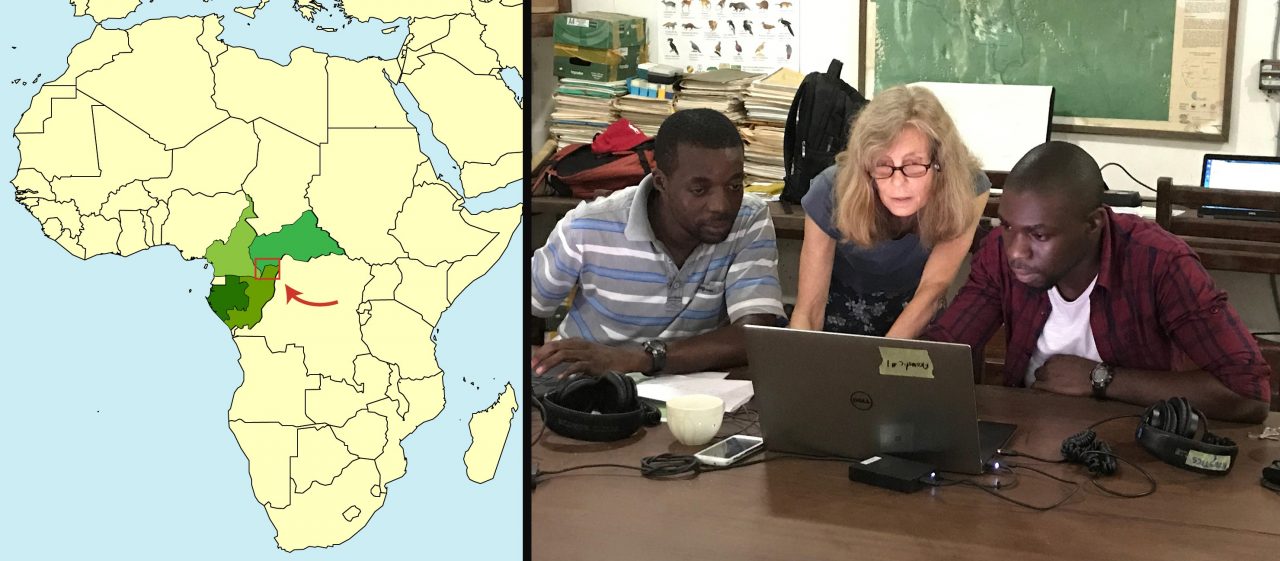
Until now, information on the size of forest elephant populations has come, if lucky, only once in five years based on transect surveys (counts of dung-piles analyzed using distance sampling methods). More than once in the last decade such sampling has evidenced the catastrophic decline of populations within the five years, leaving fewer options for adapting conservation strategies.

Preparing a recording unit before deployment 
View of a PAM unit up close 
A PAM unit being deployed up in the forest canopy
Enter Passive Acoustic Monitoring (PAM). We are convinced that a grid like ours in northern Congo can provide, at four month intervals, information not only about population size but also details of forest elephant ecology, including movement through the landscape, and unbiased measures of poaching intensity. But can it be done cost-effectively? This is, literally, the $24,000 question. If it can be done for this amount of money, we have a tool with the impact potential to change the way conservation is done in rainforests across the globe.
Hand in hand with cost effectiveness is sustainability, and this means transferring the skills and the infrastructure needed to process huge amounts of data within the elephant range states, by trained teams of local researchers. ELP has hit a gold mine in the two Wildlife Conservation Society researchers who lead our acoustic team in Congo. Phael and Frelcia maintain an incredibly high level of enthusiasm and commitment to making this project happen, even though every recording cycle of 3-4 months requires almost two full months in the forest hiking and camping in order to visit all 50 acoustic units to gather the data and renew the power supply!
In March Liz and I travelled to Bomassa, arriving just as the team returned with the first three months of sound data from the acoustic grid. For three weeks we worked with Frelcia and Phael to archive nearly 5000 sound files (6.3TB), run our gunshot detector on all of these files, and reviewed and summarized the detection results to identify where poaching was happening. We even got a preliminary idea of how forest elephants were using this huge landscape.
I could not have been more excited or more gratified—we CAN do this, in the field, where the results can be communicated directly to managers and anti-poaching teams where the information can have immediate impact. What’s up next? Phael and Frelcia are tromping the forest again right now, collecting the second chunk of sound data from the forest, which they will process and analyze all on their own.
Phael relates his most incredible experience: “I agree with Frelcia. Coming face to face with an elephant at only a few meters is very exciting. I saw many during the large mammal survey [2017], but while working on this project I saw the biggest elephant that I have ever seen. I couldn’t believe that an elephant could be so gigantic! I will never forget that day.”
Keep safe, guys!
